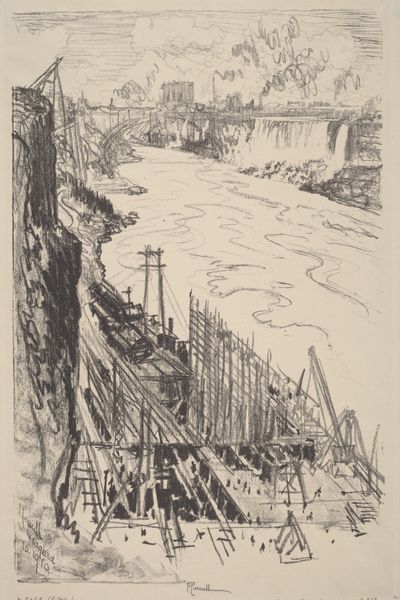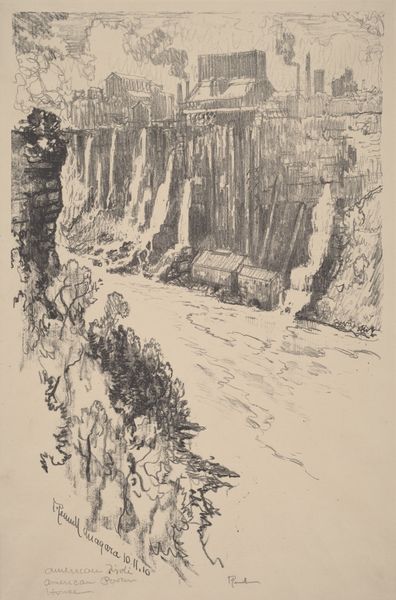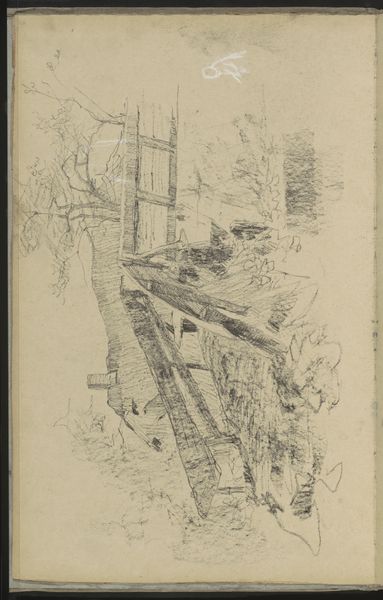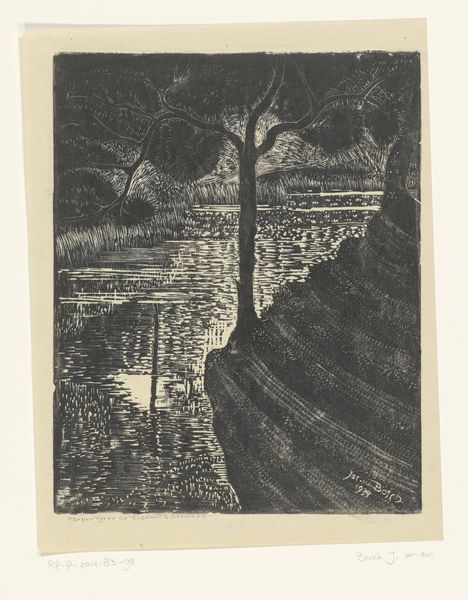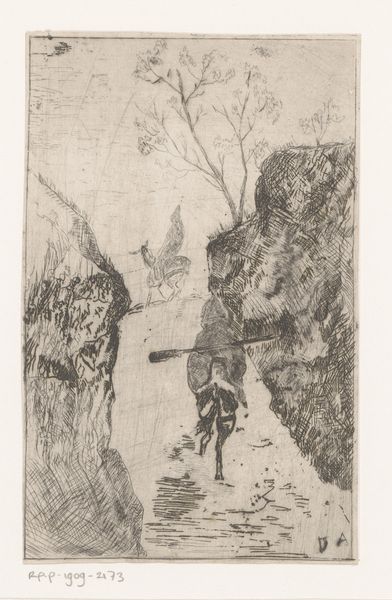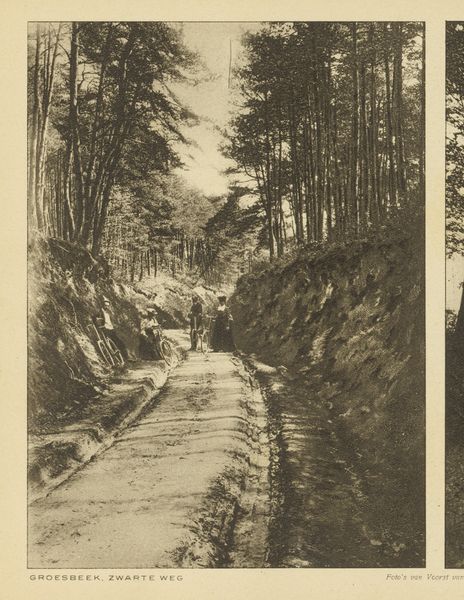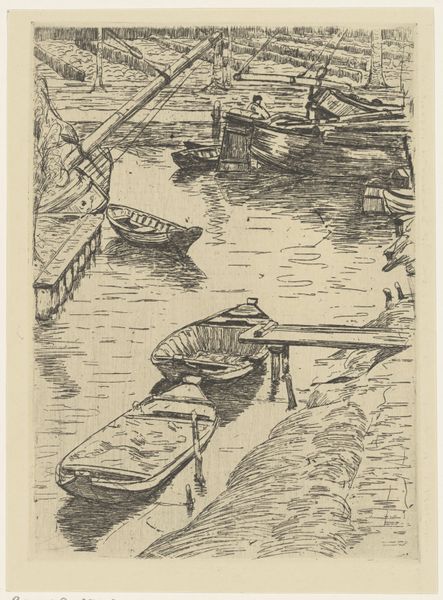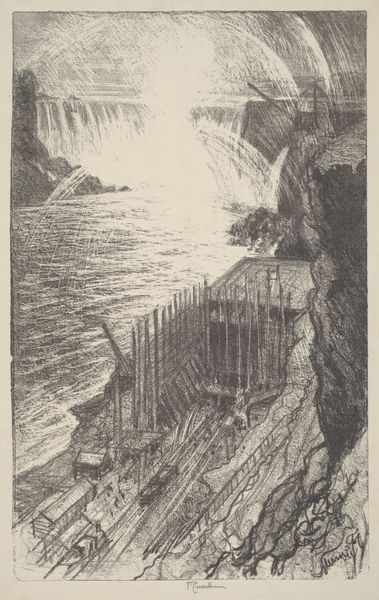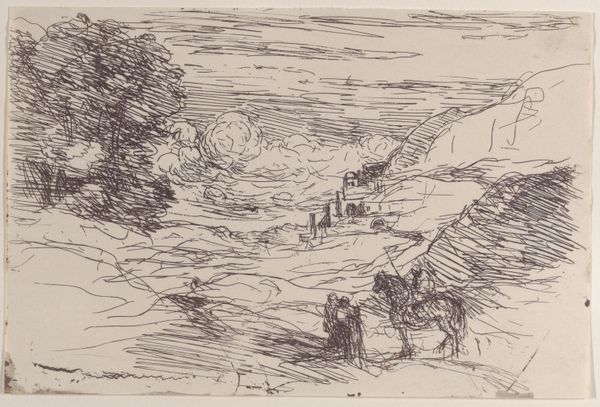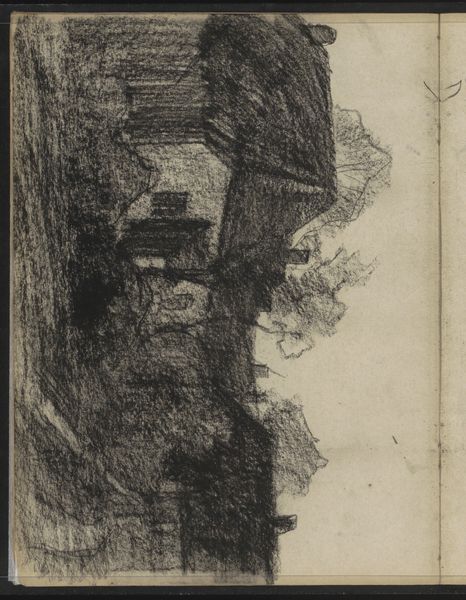
Copyright: National Gallery of Art: CC0 1.0
Curator: Here we have Joseph Pennell's "The Mystery of the Mist," created around 1910. He used graphite and pencil in this print. Editor: My initial impression is one of immense power, almost frightening. The misty atmosphere nearly obscures everything, yet the forceful lines suggest an unrelenting, almost industrial energy below. Curator: That's interesting because Pennell often focused on industrial scenes and processes. While ostensibly a landscape, note the structural elements along the river’s edge. It looks almost like a factory carved into the rock face. We have the sublime power of nature, but there are elements pointing to human interventions. Editor: Yes, those industrial structures are fascinating. They almost seem to be literally devouring the landscape. Consider the symbolic implications: the taming of nature, progress at what cost? It recalls the Romantic era obsession with the awe and terror of nature, alongside early 20th century anxieties about industrial encroachment. Curator: Precisely! Pennell's choices regarding material are telling here, too. The work relies solely on graphite and pencil. There is an incredible rawness, with each mark very visible. This directness feels true to the immediacy of industrial production. Think about the draftsmen involved in engineering and architectural projects. This medium brings that labor into the final artwork itself. Editor: I’m intrigued by the scale. The vastness of the falls is emphasized by the tiny figures on the clifftop. They become almost insignificant. Perhaps a reminder of human vulnerability when faced with nature’s overwhelming force. But the plumes of mist that enshroud them also hint at a protective veil or spirit. Curator: I wonder too if the printmaking element itself introduces considerations about reproduction, mechanical repetition. Think about the printmakers who labored to reproduce Pennell’s design and the significance of such labor being made to serve mass consumption. The print as a form amplifies the sense of something already being transformed by industrial forces. Editor: In viewing the symbolism and these implications, I now consider the mist itself almost a physical manifestation of that uncertainty—the blurry space between nature and technology, the seen and unseen, what is glorified and what is lost. Curator: I appreciate seeing the interplay of materiality, means of production and that early 20th century dialogue within the landscape that he renders in such stark terms. Editor: It truly gives us an arresting portrait that transcends simple observation and hints at the shifting values in that era.
Comments
No comments
Be the first to comment and join the conversation on the ultimate creative platform.
